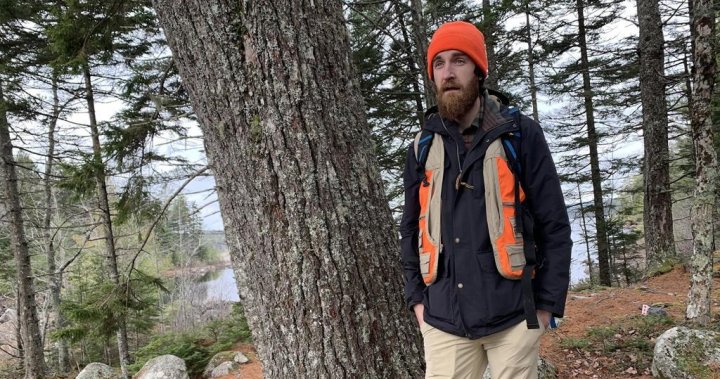
In Halifax, a call to promote old-growth forests as a guard against future wildfires
Global News
After a historic wildfire season across Canada, experts are turning their eyes to Nova Scotia as a harbinger of the growing risk facing cities on the forest's edge.
As he stands near a Nova Scotia forest with soaring 150-year-old trees, Mike Lancaster sees a natural, long-term solution to the threat wildfires pose to city dwellers.
The director of the St. Margaret’s Bay Stewardship Association says much of the 1,000 hectares that ignited in May — destroying 151 homes and businesses in Halifax’s western suburbs — was young, dense, coniferous woodland that had grown after decades of intensive logging.
Pointing to the canopy of older-growth trees just three kilometres from lands scarred by wildfire, Lancaster describes how the space between the trees, the mixture of species and the higher branches decrease flammability.
The 33-year-old forestry consultant says Nova Scotia should plan for centuries of restoration — rather than continuing a cycle of encouraging highly combustible trees and frequent cutting. “If we clear cut forests, it’s going to reduce the risk in the short term, but in decades … we’ll be back into the same problem of fire risk we already had,” he says.
After a historic wildfire season across Canada, experts are turning their eyes to Nova Scotia as a harbinger of the growing risk facing cities on the forest’s edge.
“If Halifax can burn, any place can burn, and that blows all our minds,” says John Vaillant, author of the award-winning Fire Weather: The Making of a Beast, which tells the story of the 2016 Fort McMurray forest fire. Vaillant said in an interview that Nova Scotia’s urban wildfires were a shock to fire experts across Canada, making the province’s next steps a matter of national interest.
However, what — if any — changes will be made to Nova Scotia’s forestry practices in 2024 is unclear, as the department has yet to release initial findings on how the Halifax-area blaze ignited and what might prevent a recurrence. Natural Resources Minister Tory Rushton says the report will come “as soon as possible,” before the next wildfire season begins.
Changes are needed, the minister says, and one aspect could be improved forest management at the edge of urban areas to decrease fire risk. “It’s anticipated these fires are going to happen more frequently,” he said in a recent interview, acknowledging climate science that predicts shorter, drier winters and hotter temperatures will lead to more frequent fires.











